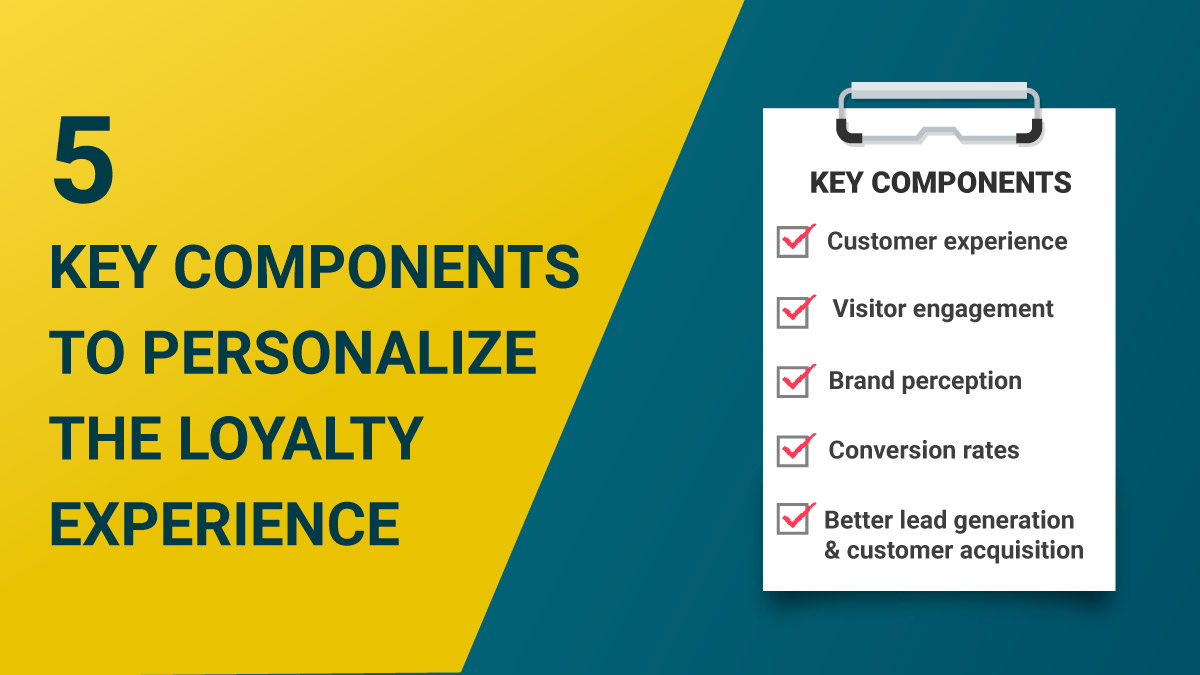
Mrudul

Loyalty is a strong word. There are emotions attached to it. It is earned. In business, the same logic goes. You need to earn the loyalty of your customers by giving them so much value that they trust you. How do you inspire loyalty? The assembly line manufacturing style that Henry Ford popularized is more of an aberration than the norm these days. Because customers want products that are unique to their likes and dislikes. With thousands of customers to cater to, only a customer rewards program software can make the entire process easy.
Brands that love its customers always put them ahead of everything else. In fact, doing so only increases the brand value and revenue of the business. Accenture’s Pulse Check 2018 report says that 91% of customers are likely to shop with businesses that give relevant offers and recommendations.
Here are the top 5 benefits of personalization:
Your customer’s loyalty is directly proportional to their experience at all stages of the journey. Most companies are not familiar with the concept of personalizing the experience of the customer.
Here are 5 key components that you need to employ to personalize the loyalty experience for your customers:
The very foundation of marketing is segmentation. If you do not segment your customers based on different factors, your marketing plan, if you have one, is as good as dead. Customers are different. Each has their unique likes, dislikes, habits and buying patterns. You can divide customers into different segments. This is the first step towards personalizing the experience of your customers. Sending segmented email campaigns results in a 760% revenue increase, says Campaign Monitor.
When you send content that is exclusive to a certain set of users, you can expect higher open rates, more clicks, lesser bounce rate and greater conversions. To be able to segment your customers properly, you would require to collect a lot of data about your customers. Surveys, phone calls, interviews, etc, are a great way to learn more about your customers. A customer reward program software helps you use the segmented customer info into a loyal one.
The relationship between the business and the customer shouldn’t be a one-time thing that is solely transactional. Not only would you be able to generate more sales in the future by upselling or cross-selling but you can also get referrals from customers who are satisfied with your work. To make this happen, you need to have a strategy to increase loyalty. Thankfully, you can have a structured company reward program. Amazon Prime, Starbucks Rewards, Sephora’s Beauty Insider, Hilton Honors, etc, are some of the most popular customer loyalty programs and these have given unbridled success for the companies. Bond’s ‘The Loyalty Report’ says that 79% of people say that company reward programs make them more likely to continue doing business with companies. That’s a significant number of people who can be influenced by customer loyalty programs that adds value to them.
A customer who is comfortable with getting on calls to customer service executives might not necessarily be email savvy as well. So if the only option you give for your customer to resolve issues is via email, then it creates a lot of friction. Businesses have invested a lot of money on automation when it comes to customer service. It lowers cost, reduces man-effort, makes work easier, saves time, and so on. But if a customer’s problem isn’t solved by your advanced AI, then allowing them the option to give you a call or send you a message on FB chatbot, for instance, shouldn’t be restricted. Even the option of live chat can be a welcome step for most customers.
Personalization is not only about knowing what your customer wants and acting according to it but also about how they can use the rewards for their loyalty. If your loyalty points can be redeemed only when they purchase the next time from you, that would arouse a tepid response.
Or if there is only one option to get points for loyalty, let’s say-” Share this page to 5 of your Facebook friends to get points to your reward wallet.” Something like this would not go down well with customers who don’t use Facebook. It is an opportunity lost and a customer scorned. A customer who is not extremely familiar with your brand might not be comfortable using your “refer-a-friend” option while he/she will be ready to like and comment on your social media posts.
The only way to personalize the ,loyalty experience for your customers at scale is to integrate it with technology. If you do not have the technological prowess to do this, you can take the services of a company like 99minds which allows you to use conditional logic to create any kind of rewards program. In fact, based on projections by McKinsey Global Institute, the value of personalization is in trillions. The study notes “this value will be captured in a variety of ways, for example, more valued products and services, revenue growth, cost savings, or, indeed, consumer surplus.”
89% of digital businesses are on a war footing to invest in personalization, including Netflix, Coca-Cola, USAA, Wells Fargo, Sephora, and more. It is no surprise that businesses want to personalize the loyalty experience when the benefits are there for everyone to see. If you want to give special treatment to your customers, then you need to have a huge repository of data about them. Customers appreciate the value that comes with company reward programs, especially an effective one that caters to their personal needs.